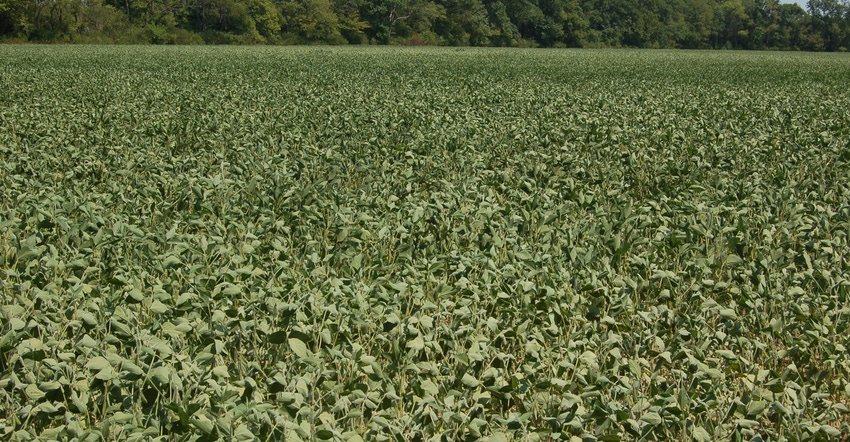July 12, 2018

Some spots in rolling fields of soybeans always dry up sooner than others. Is it disease, nematodes, soil types or what? If it happens this year, what can I do to try to pinpoint the cause?
The Indiana certified crop advisers panel answering this question includes Don Burgess, agronomist with A&L Great Lakes Labs, Fort Wayne; Jesse Grogan, agronomist with AgReliant Genetics, Lafayette; and Bryan Overstreet, Purdue University Extension ag educator in Jasper County.
Burgess: The short answer is it can be any, all or none of these factors. As a soybean crop matures, the overall health and vigor of the plant is diminished, making it more susceptible to disease, nematodes, moisture stress or other injury.
Rolling fields generally feature uneven soil moistures, depending on the point in the landscape. In the lower areas, soils tend to retain more moisture longer than higher areas, and usually have higher organic matter contents and deeper profiles. In a dry year, this can sustain the beans in the lower positions longer and allow them to retain their green color longer than in higher areas where soil moisture is limited and the crop experiences earlier senescence. In a wetter year, these higher moisture levels can favor the development of diseases that can lead to earlier drying.
Good scouting and recognizing patterns of expression throughout the field are the best tools to pinpoint the cause and whether there are any management changes that are needed in the current crop or future soybean crops.
Grogan: Those spots can be caused by several factors on rolling hills. They could be due to thin soil over gravel where drought stress is common, or an area of soil compaction on a hillside due to present or past tillage. Early senescence can occur due to physical reasons or in combination with disease. Several diseases to evaluate would be soybean cyst nematode or a fungal disease called charcoal rot.
Evaluation for soybean cyst nematode requires collecting soil samples in the troubled spot compared to a normal spot nearby. Reported cyst counts can determine if they are a factor. Also dig plants in midsummer to detect the presence of female cysts on the roots.
Charcoal rot can be diagnosed prior to harvest when plants are beginning to senesce. Look for the small pepper-like particles in the lower stem and main root. Charcoal rot is common in droughty areas of fields. Charcoal rot can cause early senescence
Overstreet: First, I would map out those locations that dry up early and compare them to a soils map. You can go to websoilsurvey.nrcs.usda.gov/app and look at the soils map to compare. You may also take soil samples to see if there is a deficiency in those areas. You could also do a nematode test. Purdue University’s nematode lab has closed, but check with your Purdue Extension office on where the samples could be sent to be tested. I would look at those things before I would investigate a disease, but you could scout those places in the field for disease when they start turning color.
You May Also Like




